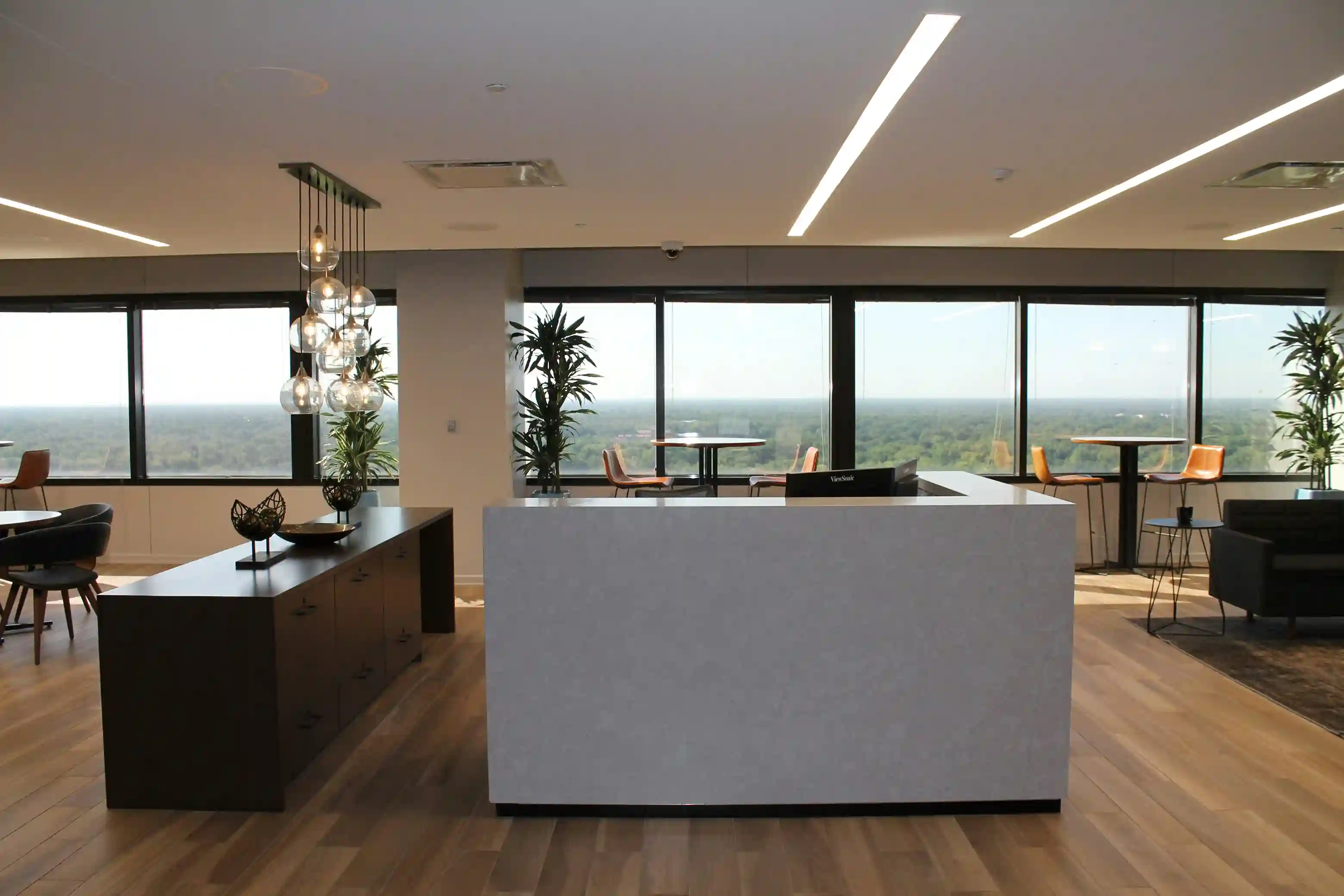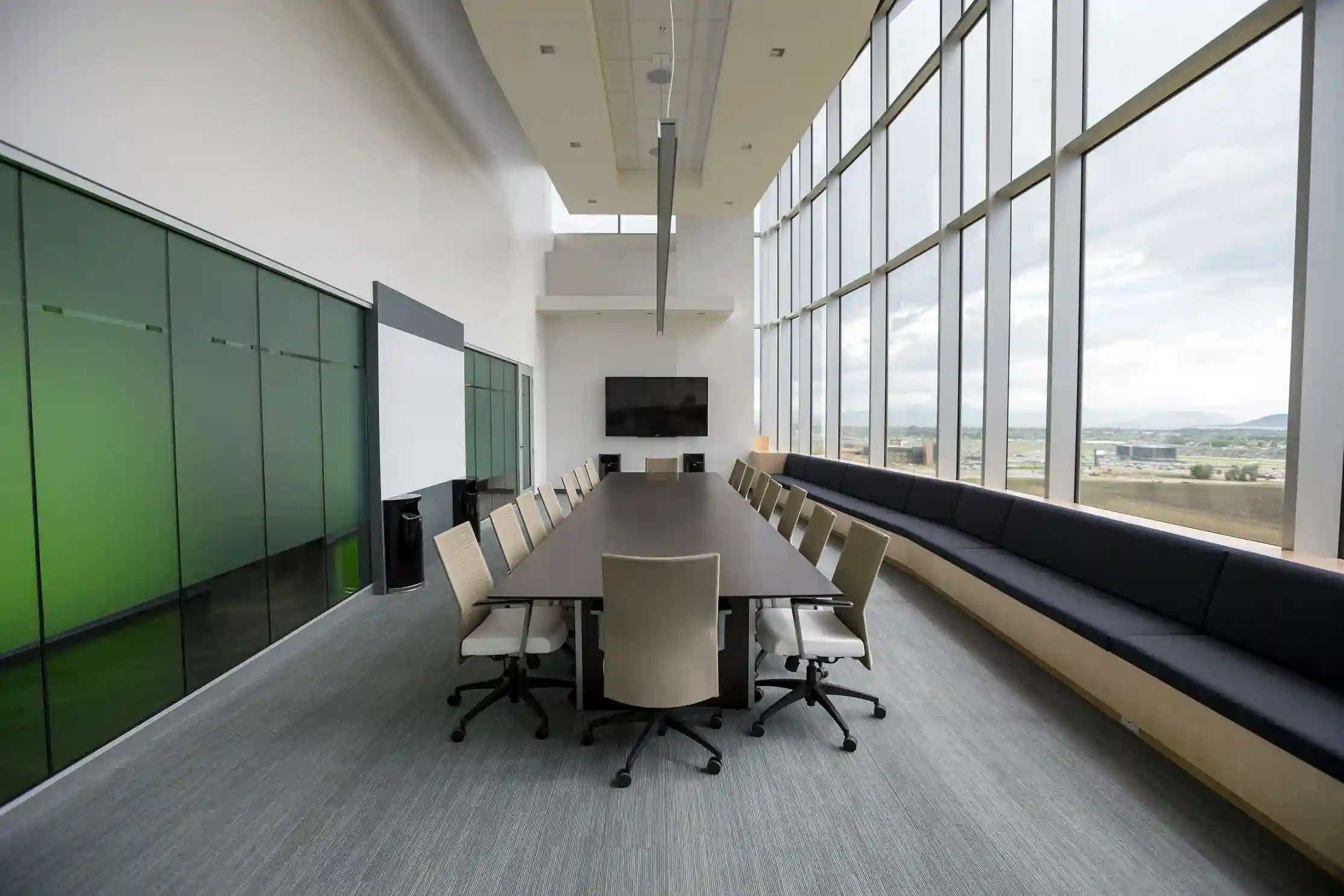
Office Space Planning: Tips For An Efficient Workspace
Discover expert tips on office space planning to create a highly efficient workspace. Learn how to maximize productivity with advanced space planning ...
Solutions
Workplace Management Solutions
Real Estate Management Solutions
Maintenance Management Solutions
Energy Management Solutions
Engineering Document Management Solutions
Asset Management Solutions
Automate campus scheduling for classes, meetings, and exams with our EMS software.
Plan and manage conferences effortlessly with EMS software to impress guests and streamline operations.
Boost workplace flexibility and maximize space use with seamless desk and room booking.
Organize workplace or campus events smoothly, creating memorable experiences.
Optimize workspace, manage allocations efficiently, and reduce costs with our space management solutions.
Deliver projects on time and within budget by improving communication, collaboration, and efficiency with our software.
Streamline lease accounting for ASC 842, IFRS, and GASB compliance.
Manage leases efficiently by tracking key dates, analyzing costs, and ensuring compliance.
Centralize data and analytics for better insights, faster negotiations, and revenue growth.
Centralize facility and asset maintenance, automate work orders, and ensure compliance with our CMMS software.
Extend asset life, reduce downtime, and prevent costly repairs with data-driven monitoring.
Prevent equipment failures and extend asset life by detecting and addressing issues early.
Make sustainable, cost-efficient energy decisions by monitoring and optimizing power consumption.
Remotely monitor and control equipment with real-time data to predict issues, boost efficiency, and reduce downtime.
Easily share and collaborate on documents, creating a single source of truth for engineers and contractors.
Manage and analyze assets across their lifecycle to schedule maintenance, reduce downtime, and extend lifespan.
Improve visibility, automate work orders, and ensure compliance for efficient facility and asset management.
Resources
Browse our full library of resources all in one place, including webinars, whitepapers, podcast episodes, and more.
Support
Looking for access to technical support, best practices, helpful videos, or training tools? You’ve come to the right place.
About Accruent
Get the latest information on Accruent, our solutions, events, and the company at large.

Workspace management software optimizes office spaces and resources, simplifying scheduling and boosting productivity in hybrid work environments. By offering real-time analytics, seamless integration, and scalability, it empowers organizations to adapt and thrive in modern workspace dynamics.
Table of contents
In 2024, over a quarter of full-time employees operated under a hybrid work model. This is an example of how modern workspaces aren’t what they once were—and that’s a massive opportunity.
As hybrid work becomes more prevalent, individuals are often on the move—whether attending a work conference, working on a school campus, or splitting time between home and the office as hybrid employees. Organizations must revaluate their approach to space management to support the flexibility required by this workforce and maximize the value of their environment. How often are areas of the office being utilized? Should leaders implement desk booking software? When are specific spaces in the highest demand?
These questions demonstrate the growing need for efficient workspace management software that offers features that optimize office environments while boosting employee productivity. Understanding the key features and tips for selecting the best software can transform how businesses operate and manage workspaces.
Optimize office environments and boost productivity with smart tools.
Workspace management software is a tool designed to optimize the use of office spaces and resources. It simplifies resource scheduling, room booking, and resource allocation, ensuring that office space is utilized efficiently. The primary objectives are to increase productivity, reduce costs, and improve employee satisfaction.
Remote and hybrid work models are standard in today's dynamic work environment. This software helps manage diverse needs, from hot-desking to conference room bookings. When used correctly, it’s easier for organizations to adapt to changing work patterns and maximize the efficiency of their physical spaces.
On average, employees prefer to be in the office two to three days per week – and this schedule tends to optimize employee engagement for many roles.”
What makes one workplace management software better than another? Here are the key features to look for when selecting a software solution.
An intuitive interface reduces users' learning curve and boosts adoption rates. Look for software that offers customization options to cater to different user needs. The best solutions are accessible across various devices and platforms, allowing staff to manage their workspace from anywhere.
Advanced booking options, such as recurring meetings and room preferences, are necessary. The software should detect and resolve scheduling conflicts automatically. Integration with calendar systems like Outlook and Google Calendar simplifies scheduling and keeps everyone on the same page.
A primary feature to look for in workspace management software is the allocation of workspace and resources. The solution should provide real-time availability and status updates, making space management easy. Proper inventory management for equipment and amenities avoids issues for upcoming meetings and events.
Workspace management software provides companies with access to customizable reports with insights tailored to their specific needs. Predictive analytics can anticipate future workspace requirements, providing actionable insights for planning and resource allocation based on anticipated needs.
Look for software with API availability for seamless integration. Commonly integrated systems include Human Resources Management (HRM), Customer Relationship Management (CRM), and Enterprise Resource Planning (ERP). The goal is to simplify and unify operations, which increases operational efficiency overall.
The best workspace management software meets the unique needs of an organization. But what does that look like in practice? Here are five tips for choosing the right workspace management software.

Start with a thorough needs analysis to identify key challenges and pain points. Implement the software to set clear goals and objectives for the organization. Defining these criteria ensures that the chosen solution aligns with the organization’s requirements.
Compare the features and functionalities of different software options. Read reviews and case studies to understand how they perform in real-world scenarios. Consider vendor support and customer service level, as these will be important for smooth implementation and ongoing use.
Determine the budget and calculate the potential return on investment. Look for flexible pricing models that can work within your budget and financial models. Investing in the right software can lead to significant savings and productivity gains over time.
Choose software that can grow with your organization and offers customization options to fit your business needs. Look for solutions, prioritizing continuous improvement and regularly introducing new features, ensuring the software remains adaptable as your organization evolves.
Evaluate the software’s data protection measures to safeguard sensitive information. Double-check that it complies with industry regulations and standards. Review the vendor’s security certifications and protocols to confirm their data security and compliance commitment.
To implement space management software effectively, carefully adhere to these key steps for a successful rollout.
Accruent EMS is an industry-leading solution in workspace management. With a variety of features, it helps organizations optimize office environments and boost employee productivity.

Key features of Accruent EMS include:
With these features, Accruent EMS meets the needs of effective workspace management. The software supports seamless operations, drives productivity, and helps organizations adapt to evolving requirements.
In an era of hybrid work, remote work, and other innovative approaches, understanding how to manage a workspace best can be transformative for business. The right workspace management software simplifies operations, provides data-driven insights for better decision-making, and helps to reduce costs.
With the right software, transform your office environment and boost productivity. Discover how Accruent EMS can elevate your organization.
Here are some common questions about workspace management software.
Workspace management software optimizes the use of office spaces and resources. It simplifies scheduling, room booking, and resource allocation, reducing conflicts and increasing efficiency. Providing real-time data and analytics helps leaders and office managers make informed decisions. The result is a more organized and productive work environment.
Yes, most workspace management software offers customization options. Depending on an organization's needs, features such as booking processes, user permissions, and reporting tools can be tailored to match specific requirements. When done right, the software can align with an organization’s workflow and goals.
Start by assessing the organization’s needs and identifying key challenges. Evaluate vendor offerings. Focus on features like scalability, flexibility, and integration capabilities. Look for software that supports multiple locations. It should offer robust scheduling and resource management features. Additionally, it must provide strong security and compliance measures. Reading reviews and case studies can also help in making an informed decision.
Discover expert tips on office space planning to create a highly efficient workspace. Learn how to maximize productivity with advanced space planning ...
Streamline workspace booking with office hoteling software. Boost productivity, reduce real estate costs, and enhance workplace flexibility.
Discover the benefits of a conference room reservation system to optimize scheduling and management of meetings, events, and conferences.
Subscribe to stay up to date with our latest news, resources and best practices